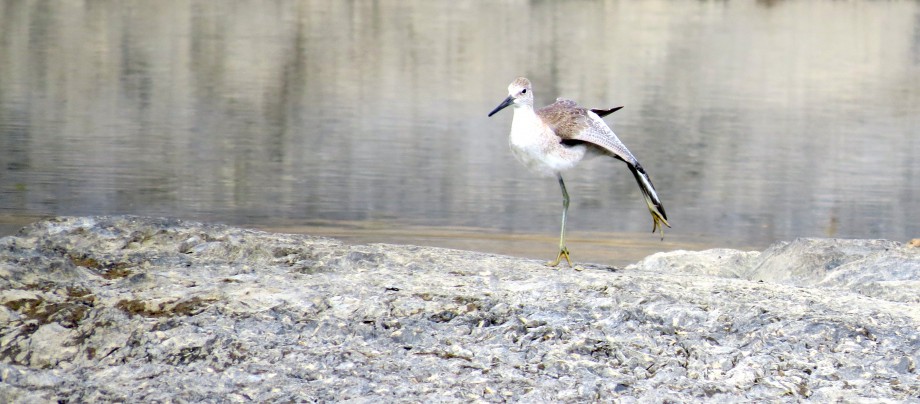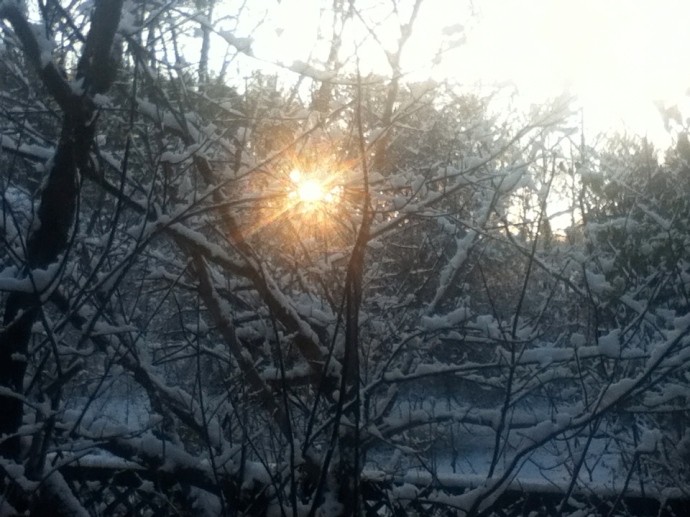January’s bird of the month was the pair of Sandhill Cranes at Crescent.What a thrill to see them so close up.

February was gull month. I added three lifers to my list: Iceland Gull (below, with 3 Herring Gulls), Lesser Black-back, and Glaucous Gull, plus Little Gull in July. They really aren’t all the same! I begin to understand Laridaephiles!

March is the first stirring of spring, bringing the earliest Blackbirds and Tree Swallows. Waterfowl are on the move!

Pied-billed Grebe
There’s nothing better than April for a birder. Everything is coming! Almost as birdy as May, and fewer bugs! Tree and Chipping Sparrows switch places again. The earliest Warblers flit through the still-bare treetops. Shorebirds are bolting north. And herps are making their own short migrations.

Spotted Turtle
All right, I take it back about April. May. May. MAY. Every day brings new migrants, new nesting birds, so many colors and voices there’s no time to blog or photograph or even think, sometimes. It’s all I can to to absorb every brilliant moment. I saw my first Hooded Warbler, my first Golden-winged Warbler, my first Vesper Sparrow. I heard a King Rail! Hummingbirds, Orioles, Swifts! These trees were dripping with warblers.

June, and things are calming just a bit. The residents are settling down to the business of nesting. A field trip to Montgomery County showed me an Upland Sandpiper, doing exactly what an Uppie is supposed to do — pose on a fencepost and whoop his wolf whistle. A side trip to the neighboring town of Root produced a surprise — a Clay-colored Sparrow singing from the top of a shrub! A two-lifer day!

July is the time to settle in and do some birdwatching, instead of birding. See fuzzy-headed fledgelings at the feeders, Tuftless Titmice and short-tailed Catbirds begging and nagging. Some of the territorial sniping has calmed and birds, like us, are just hanging out at the lake trying to stay cool. Hey, is that a Grasshopper Sparrow? Lifer!

Solitary on left, Yellowlegs on right
For shorebirds, August means summer is over and it’s time to head south from their far-north nesting grounds. I caught this Sanderling on a rest stop at Cohoes. The surprise of the month was a pair of Red-headed Woodpeckers in the Albany Pine Bush, first I’d seen since moving up here. And after seeing my first pair ever of Cliff Swallows, I looked carefully at the power lines on my road and found a new yard bird, too.

Sanderling

Squint to see RHWO.
The warblers sweep back down in September in ‘confusing fall warbler’ plumage. Look carefully, and you can pick up species missed on the way up. I found my Philadelphia Vireo that way. Fortune favors the prepared, they say. I’d been looking for a Philly to complete the category, and so I was ready when I saw him — another lifer. The (white) Little Blue Heron was a surprise, though. In the style section, Pirate Birding was all the rage.

I spy with my little eye…
October, the month of mist and spiderwebs. Unexpected birds like these Tundra Swans show up with migrating waterfowl. Here one day, a hundred miles south tomorrow, any sighting pure chance.

November’s big goal — I swore that this winter I would see a Short-eared Owl, if I had to pitch a tent on Fitzpatrick Road to do it. And I did! (See the owl, that is, not camping on the old tent-ground.) And up in the Adirondacks I caught glimpses of Boreal Chickadees, just as adorable as their Black-capped cousins. But the number of species has dropped by a third since last month, and I swear I recognize every beak at the feeder. Still I have something to be thankful for– a new camera, and better photos to look forward to sharing.
December — it’s Christmas Bird Count time! Pray that good bird hangs around until count day! Hope it flies over my sector instead of crossing the river! Swap tall tales of CBCs present and past, and how easy we young punks have it today — the old timers birded on foot! in the snow! barefoot! uphill both ways! just to score every Blue Jay! And sometimes (whisper it) ditch your count for a bird so cool you just have to see it.

So I end the year the way I started it, with a big charismatic bird that doesn’t mind being gawked at.












































